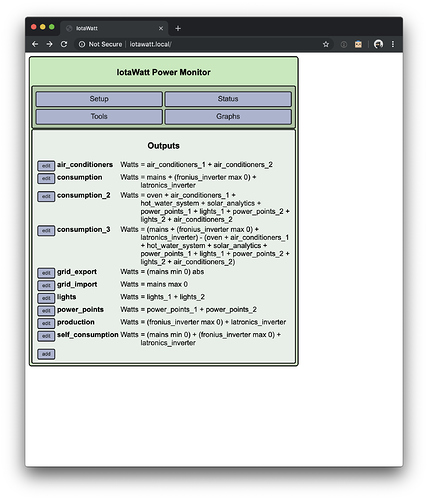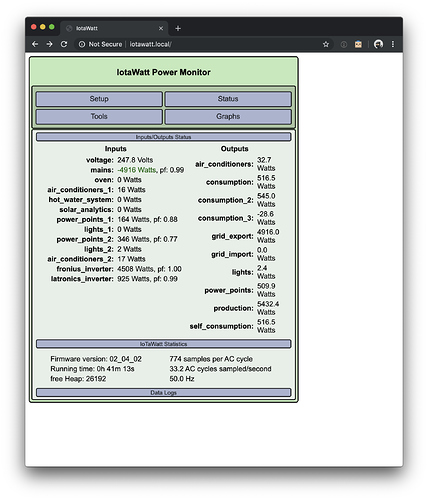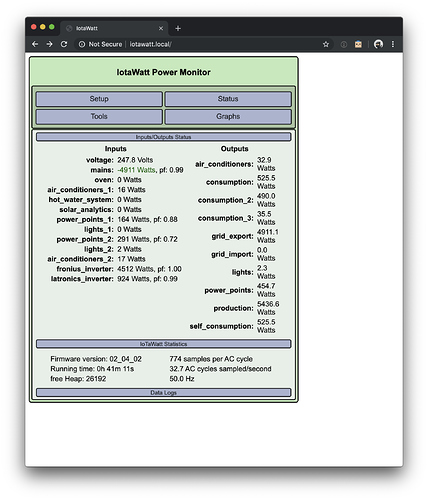I’ve just installed IoTaWatt, and it’s awesome. Thanks so much for all the hard work on the hardware and software. So much better than the Solar Analytics I also have installed.
I have two inverters and net metered mains, and I have placed a CT clamp on every sub-circuit (oven, air conditioners, hot water system, solar analytics, power points, lights).
The fronius inverter consumes ~11W in standby overnight to monitor consumption, so I’ve used the min/max output functions to get positive values for:
- total consumption – mains + (fronius max 0) + latronics
- grid export – (mains min 0) abs
- grid import – mains max 0
- solar production – (fronius max 0) + latronics
- solar self consumption – (mains min 0) + (fronius max 0) + latronics
When I look at the outputs, it seems to all add up perfectly.
But then I created another output to measure consumption of the measured sub-circuits directly (consumption_2). This did not add up to “total consumption” as I had expected, and the difference was not a steady value.
So then I created yet another output (consumption_3) to show the difference in real time (consumption - consumption_2), and the value is quite volatile, swinging from about -40W to 40W.
I’m at a loss as to how to explain this. Any tips?





